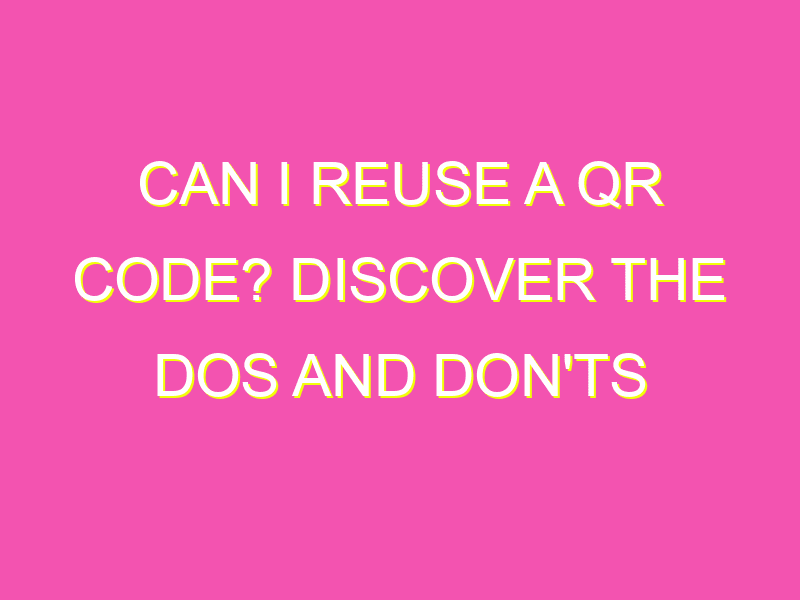QR codes are a game-changer for easy access to digital information. And while static codes have their limitations, dynamic QR codes are here to save the day! Did you know that you can reuse a dynamic QR code without any hassle? Here are some awesome benefits you get when you do so:
So, go ahead and reuse your dynamic QR codes: save money, time, and hassle!
Understand the difference between static and dynamic QR codes
QR codes have become a common feature of advertising and marketing campaigns. These codes are used to redirect users to a specific page, such as a company’s website or a social media account. QR codes come in two different types: static and dynamic. A static code is one that is fixed and cannot be changed once it is generated. On the other hand, a dynamic QR code can be edited and updated without necessarily changing the underlying code.
The limitations of static QR codes
While a static QR code can be effective in redirecting users to a specific page, it does have limitations. For example, if the link on the code is no longer relevant or has changed, users may end up on the wrong page, resulting in a bad user experience. Furthermore, a static code is difficult to measure in terms of success rate, as there is no data available on who scanned it or when it was scanned. This means it can be challenging to track the performance of a marketing campaign that uses static QR codes.
The benefits of dynamic QR codes
Dynamic QR codes, on the other hand, can be very effective in marketing campaigns. Because they can be edited and updated, it is possible to redirect users to a different page that is more relevant or up-to-date. This makes it easier to maintain the user experience and keep users engaged with a company’s brand. Additionally, dynamic QR codes provide more data on who and when the code is scanned. This information can be used to track the performance of the campaign and make adjustments as needed.
How to transfer data using dynamic QR codes
If you have an existing dynamic QR code and want to transfer the data to another location, such as a new website, this is very easy to do. All you need to do is edit the link associated with the code, and users who scan it will be automatically redirected to the new location. Unlike static QR codes, you don’t have to generate a new code, which can save time and money.
The cost of using dynamic QR codes
While dynamic QR codes can be an effective tool in marketing campaigns, they do come with a cost. There are many QR code generators that offer free dynamic codes, but they usually come with limitations, such as a maximum number of scans or limited features. To get the most out of a dynamic QR code, you may need to invest in a paid service that offers more flexibility and features. Depending on the provider, the cost for a dynamic QR code can range from a few dollars a month to hundreds of dollars annually.
Best practices for reusing QR codes
When reusing a QR code, it is essential to maintain the user experience and ensure the code is still relevant to the campaign. Here are some best practices to follow:
- Test the code: Before reusing a QR code, test it to ensure it still works as intended.
- Update the link: If you are redirecting users to a different location, update the link to ensure it is current.
- Track performance: Use tracking tools to monitor the performance of the code and make necessary adjustments.
- Provide context: Make sure users understand the purpose of the code and what they can expect to see when they scan it.
How to test the functionality of a reused QR code
Testing the functionality of a reused QR code is critical to the success of a marketing campaign. Here are some tips on how to test the functionality of a QR code:
- Scan the code: Use a smartphone or tablet to scan the code to ensure it works correctly.
- Verify the link: Check that the link associated with the code is correct and leads to the intended destination.
- Test on different devices: QR codes can behave differently on various devices, so it is essential to test on as many different devices as possible.
- Ask for feedback: Encourage users to provide feedback on their experience scanning the code.
In conclusion, while static QR codes lack the flexibility and tracking features of dynamic codes, they can be an effective tool in marketing campaigns. When reusing a QR code, be sure to follow best practices for maintaining the user experience and testing the functionality of the code. With proper planning and execution, QR codes can be an excellent way to engage with customers and build brand awareness.





